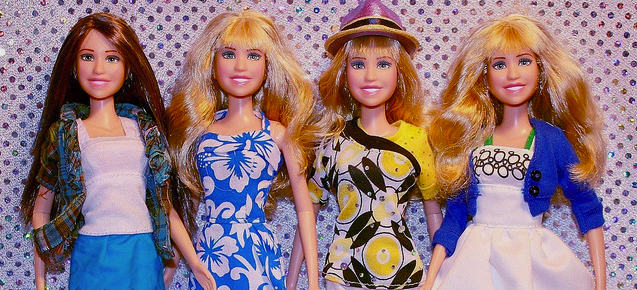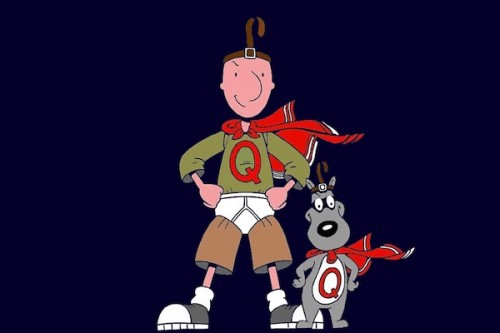
A very interesting article by Bryan Lufkin over at The Atlantic about the seismic thematic shift that’s taken place on children’s networks like Nickelodeon and Disney. Lufkin calls it “The Hannah Montana Effect”, citing several primetime slots currently being occupied by 30-minute programs about the everyday lives of rich and famous, dream-achieving youngsters. It’s a little weird, considering the 90s were filled with shows about average, no-count, oddball children. Doug Funny had a C average, kept getting beat up by Roger Klotz, had a green friend Skeeter, and could never move past friendship with Patti Mayonnaise. The protagonist of Hey Arnold! had a football-shaped head, lived in a poor inner-city neighborhood with his grandparents, and was bullied by a girl. Pete and Pete, well, do I even need to say anything?
[youtube=http://www.youtube.com/watch?v=LiFWyZjwykg&w=550]
Now, sadly, things have changed. Sure, kids are still kids–crushes, parents, school–but now their stories seems to be embedded in the foundational subtext of celebrity. Kids still dream, love, imagine, but primarily in the context of having achieved some kind of something already. The ordinary life stuff is wrapped up in a stylized version of having all the cool clothes, the cool parties, the tour bus, the fans. Which means a subtle kind of “law of progress” has been written into the playfully foolish, ordinary childishness of childhood–suddenly being a kid is like being an adult. Maybe this is a more accurate descriptor of where kids’ minds are today–maybe fame, or significance, or mattering is something we care about elementally, even as third graders. I think that’s true. But when those yearnings are spelled out from the vantage point of the haves rather than the have-nots, the storytelling becomes kind of, well, strange. Don’t take it from me:
Clarissa Darling—in a scrunchied ponytail, dangling daisy earrings, and rolled-up, floral-print trousers—slinks through the bushes and across her front porch. She’s ducking in front of the windows. She can’t risk being seen. Her mother’s inside, revving up a family meeting. Safely making it to the stoop, Clarissa plops down, looks at the camera, and addresses the audience: “Mom has declared no TV,” she bristles. “For a week!” She vents to viewers, comparing the guilty pleasures of TV and potato chips, when her little brother, in a turtleneck, sticks his head out the door and spits, “If I’ve got to sit in there, so do you.” “Don’t worry pimple head,” she snarls back. “I’ll be there in a minute!” It’s the cold open to a 1991 episode of Nickelodeon’s live-action comedy Clarissa Explains It All, which featured a likable young teen sneaking out to Pearl Jam concerts, playing computer games, and wearing lots of Keith Haring T-shirts.
Tori Vega—wearing makeup and skinny jeans and carrying an oversized leather purse—strides to the lunch table to meet her friends. They’re all students at Hollywood Arts High, a school for fledgling performers. Today, Tori and friends are discussing an ice cream sweepstakes that nabs one lucky winner a private concert with pop superstar Ke$ha. “So far this week, I’ve eaten 11 pints of ice cream,” says one young man. He wants to collect all the letters in Ke$ha’s name from different pint containers so he can be crowned the winner. Airing 20 years after Clarissa, this is the opening scene in a 2011 episode of Victorious, a live-action comedy currently airing on Nick. In this episode, the gang eventually wrangles all of the letters (they find the “$” last) and wins the contest. Mocktails in hand, the kids are seen club-dancing as Ke$ha sings, “This place about to blow,” and shoots glitter bazookas in Tori’s living room. The episode ends with Ke$ha asking Tori, “Are your cheekbones real?”
Both programs feature young adolescents. Both are aimed at the same children’s demographic. But the heroes and heroines of Clarissa Explains It All and Victorious are quite different. In Clarissa, which is nearly always set in the title character’s house, Clarissa’s juggling part-time jobs, longing for a driver’s license, or dealing with an annoying sibling, not to mention her mom’s tofu-based health parfaits. In short, it’s a show about a kid being a kid.
Two decades later, some of Nick’s most popular shows paint their kid protagonists with a very different brush. On kid’s cable in general, the children play characters who are famous, are seeking some level of fame, strive to be associated with famous people, or are dealing with the hassles of being famous. (Things get especially crazy when one child star starts dating another. See, awkward first loves! They’re just regular kids, everyone, really!)
This fame fixation didn’t exist back on ’90s Nick. Salute Your Shorts followed a rag-tag group of pre-teens at sleepaway camp. Kenan & Kel focused on best friends who were always falling for girls or get-rich-quick schemes. And Hey Dude was about some high schoolers holding summer jobs as ranch hands. Animated series like Doug, Hey Arnold! and later As Told by Ginger were “day-in-the-life” vignettes of average everykids, navigating bullies and embarrassing family members while getting into misadventures with the neighborhood crew. Offbeat shows like The Adventures of Pete & Pete captured the wonder and weirdness of childhood. In one episode, younger Pete goes to the beach to beat up the ocean. It’s his older brother Pete’s way of knowing the summer’s definitely over, and says Little Pete is “not crazy. Just angry—angry that the summer has to end.”
[youtube=http://www.youtube.com/watch?v=OKL1ffelnNk&w=550]
The first shot of the opening credits in Victorious? A convertible, top down, cruising down the streets of L.A. The camera zooms in on Tori in the passenger seat (who’s definitely ready for her close-up), earbuds in, looking around dreamily at the palm tree-lined landscape. It cuts to various windswept shots of her on stage or on a rooftop, singing into a mic, “You don’t have to be afraid to put your dream in action / You’re never gonna fade, you’ll be the main attraction.” A fairly accurate mantra for a good chunk of children’s cable programming today. Just look at another of Nick’s current hits, iCarly—one of Nickelodeon’s flagship titles for the 2000s, entering season six. It’s about a tween weblebrity and her insanely popular Internet show. There’s also Big Time Rush, a comedy in which four teenage hockey players suddenly become the nation’s hot new boy band. Its premiere in 2010 was Nick’s highest-rated live-action debut ever. Last year, True Jackson, VP wrapped, in which a teen girl worked as vice president at an haute New York fashion house. Most recently, the new How to Rock sees shunned ex-mean girl Kacey join a rock band that rivals the in-crowd’s own musical group. In one episode, Kacey’s band attempts to achieve the same level of viral-video fame as the populars, who went on to launch a clothing line. High school—what a drag!
[youtube=http://www.youtube.com/watch?v=wKLAvVWrec0&w=550]
…Despite being famous, these characters face the same problems as any other kid. First crushes, zits, divorced parents, sibling rivalry, weird teachers, fitting in. But they’re also chasing record deals and fielding autographs. Gone are the days of Clarissa goading her little brother at the dinner table, or older Pete waxing philosophical on the end of summer. As the boys in Big Time Rush sing in their theme song: “If you want it all, lay it on the line / It’s the only life ya got, so ya gotta live it big time.”For the kids at home, does this message encourage them to follow their dreams? Who knows. But they sure like watching the kids on TV do it.

COMMENTS
Leave a Reply













